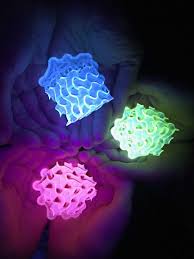
Breaking News
 How a 27-Year-Old Codebreaker Busted the Myth of Bitcoin's Anonymity
How a 27-Year-Old Codebreaker Busted the Myth of Bitcoin's Anonymity
 Old World Order is COLLAPSING: The Death of Europe and the Rise of China
Old World Order is COLLAPSING: The Death of Europe and the Rise of China
 Energy Secretary Expects Fusion to Power the World in 8-15 Years
Energy Secretary Expects Fusion to Power the World in 8-15 Years
 South Koreans Feel Betrayed Over Immigration Raid, Now Comes the Blowback
South Koreans Feel Betrayed Over Immigration Raid, Now Comes the Blowback
Top Tech News
 Tesla Megapack Keynote LIVE - TESLA is Making Transformers !!
Tesla Megapack Keynote LIVE - TESLA is Making Transformers !!
 Methylene chloride (CH2Cl?) and acetone (C?H?O) create a powerful paint remover...
Methylene chloride (CH2Cl?) and acetone (C?H?O) create a powerful paint remover...
 Engineer Builds His Own X-Ray After Hospital Charges Him $69K
Engineer Builds His Own X-Ray After Hospital Charges Him $69K
 Researchers create 2D nanomaterials with up to nine metals for extreme conditions
Researchers create 2D nanomaterials with up to nine metals for extreme conditions
 The Evolution of Electric Motors: From Bulky to Lightweight, Efficient Powerhouses
The Evolution of Electric Motors: From Bulky to Lightweight, Efficient Powerhouses
 3D-Printing 'Glue Gun' Can Repair Bone Fractures During Surgery Filling-in the Gaps Around..
3D-Printing 'Glue Gun' Can Repair Bone Fractures During Surgery Filling-in the Gaps Around..
 Kevlar-like EV battery material dissolves after use to recycle itself
Kevlar-like EV battery material dissolves after use to recycle itself
 Laser connects plane and satellite in breakthrough air-to-space link
Laser connects plane and satellite in breakthrough air-to-space link
 Lucid Motors' World-Leading Electric Powertrain Breakdown with Emad Dlala and Eric Bach
Lucid Motors' World-Leading Electric Powertrain Breakdown with Emad Dlala and Eric Bach
 Murder, UFOs & Antigravity Tech -- What's Really Happening at Huntsville, Alabama's Space Po
Murder, UFOs & Antigravity Tech -- What's Really Happening at Huntsville, Alabama's Space Po
Scientists create the brightest fluorescent materials in existence

The researchers have succeeded in transferring the properties of highly fluorescent dyes to solid optical materials, opening up new possibilities in everything from the development of next-generation solar cells to advanced lasers.
The research was carried out by scientists at Indiana University and the University of Copenhagen, who set out to solve a 150-year-old problem involving fluorescent dyes. The problem is known as "quenching" and occurs when dyes are converted to solid states, which causes them to bunch up tightly and become electronically coupled, dulling their fluorescent glow. This issue of quenching plagues the great majority of the more than 100,000 dyes that exist today.
"The problem of quenching and inter-dye coupling emerges when the dyes stand shoulder-to-shoulder inside solids," says study author Amar Flood, a chemist at Indiana University. "They cannot help but 'touch' each other. Like young children sitting at story time, they interfere with each other and stop behaving as individuals."
Flood and his colleagues believe they have found a solution to this problem, through the use of star-shaped macrocycle molecule that stops the fluorescent molecules from interacting with one another.



